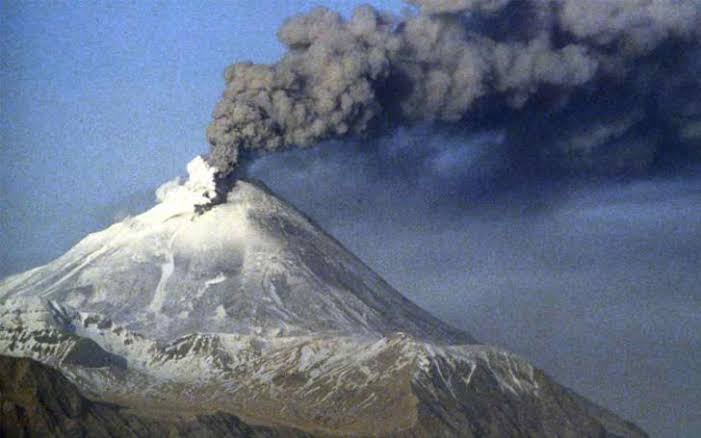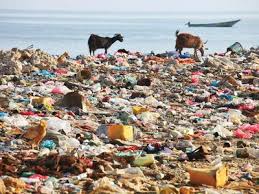The problems facing the environment are vast and diverse. Human activities range from agriculture, mining, industries to construction and poor state of waste management.
All these activities affect the atmosphere, and cause destruction of the world‘s rain forests that many scientists believe will reach critical proportions in the coming decades.
All of these problems will be directly affected by the size of the human population.
Natural Sources of Pollution
The natural sources of pollution are water and air:
Pollution may reach natural waters at spots we can easily identify, known as point sources, such as waste pipes or mine shafts.
Nonpoint sources are more difficult to recognize. Pollutants from these sources may appear a little at a time from large areas, carried along by rainfall or snowmelt.
For instance, the small oil leaks from automobiles that produce discolored spots on the asphalt of parking lots become nonpoint sources of water pollution when rain carries the oil into local waters.
Most agricultural pollution is nonpoint since it typically originates from many fields
1. Air Pollution
Air pollution is among the biggest threats to our environment. Harmful pollutants can come from human industry in the form of smog or acid rain, but air pollution also occurs as a result of natural processes that introduce foreign matter into the air.
Wind erosion, volcanic eruptions and plant decay are the three major natural causes of air pollution.

1a. Wind Erosion
Wind erosion affects crop productivity, water quality and air quality. According to the US department of Agriculture, wind erosion acts by picking up loose particles of dirt and soil, mostly where plants are too sparse to hold the soil together.
The stray particles of dirt can fall into water, and we can inadvertently breathe them. In the 1930, during the great depression, the Midwestern United States suffered drought and windstorms that created wind erosion. This gave the area the nickname ‘the dust bowl‘‘.
1b. Volcanic Eruption
In addition to Lava, Volcanic eruptions send thousands of tons of ash, soot, sulphur dioxide, carbon dioxide, carbon monoxide and other gases into the atmosphere. According to the US geological survey, sulphur dioxide combines with water vapour in the air to produce sulphuric acid, or acid rain.
Carbon dioxide from volcanic eruptions poses a threat to areas located in a depression. Carbon dioxide is naturally heavier than the surrounding air. So it sinks and collects in depressions.
1c. Decomposition
The decomposition of organic matter, like plants and animals, is the largest and most constant natural cause of air pollution.
According to the Wisconsin Department of Health, breakdown of organic matter produces methane.
It is especially common in areas of high moisture that allow saprophytic bacteria – bacteria that feed on decaying organic matter – to thrive. As the bacteria and fungi feed, the hydrogen-carbon bonds break down, allowing carbon dioxide (CO2) and methane (CH4) to be released into the air.
Radioactive Material
The earth‘s crust contains Uranium, a radioactive element. Uranium decays into radium, which in turn decays into radon. Radon is a gas that forms in trace amounts in the bedrock and topsoil of the earth‘s crust. Ground water and evaporation release this radon into the atmosphere.
Read Also: Food Contamination/Pollution and Source of Food Contamination
2. Water Pollution
2a. Eutrophication
Eutrophication is, in the simplest terms, too much of a good thing. It occurs when too many nutrients are deposited into a body of water, throwing off the established balance of production and consumption of organic matter. Eutrophication can take place in ponds, lakes, rivers, and oceans.
At first, the overload of nutrients in the body of water encourages plant growth. However, soon this excess of organic material uses up most of the available oxygen in the water, taking it away from the other plants and animals.
These other organisms can no longer survive with such depleted oxygen levels and die off; creating what is referred to sometimes as a “dead zone”, devoid of life. The table below shows the different trophic states, or levels of organic matter in relation to available oxygen, that a body of water traverses on its way to becoming a “dead zone”.
Table: Shows the Different Trophic States
| TROPHIC STATES | |
| Oligotrophic | Clear waters with little organic matter or sediment and minimum biological activity. |
| Mesotrophic | Waters with more nutrients, and therefore, more biological productivity. |
| Eutrophic | Waters extremely rich in nutrients, with high biological productivity. Some species may be choked out. |
| Hypereutrophic | Murky, highly productive waters, closest to the wetland status. Many clear water species cannot survive. |
| Dystrophic | Low in nutrients highly coloured with dissolved humic organic material. (Not necessarily a part of the natural trophic progression). |
What causes Eutrophication?
Eutrophication of bodies of water is a naturally occurring phenomenon. However, the process has been aggravated by the human population. Such man-made eutrophication is caused by excessive discharge of nutrients, especially phosphorous (P) in the form PO4, nitrogen (N) in the form NO3, and silicate.
Pictured is a diagram of how nutrients, such as phosphorous, in runoff lead to plant and animal die offs. In this diagram, phosphorous in the surface runoff fertilizes small floating aquatic plants.
As these aquatic plants proliferate, sunlight penetration is reduced. Submerged aquatic vegetation can no longer survive, and as they die and decompose, oxygen levels in the water are also depleted.
Eventually, animals die too, due to lack of oxygen. Some probable causes of this excessive nutrient runoff include sewage treatment plant leakage, septic tank leakage, urban runoff, agricultural runoff, channel dredging, and loss of wetlands.

In conclusion, As much as pollution is largely incriminated to human activities, there is obviously the important contribution made by natural events as exemplified in the last sections. Natural events that contribute to pollution are events that can hardly be controlled by man.
However, man has the natural ability to mitigate its effects. In the subsequent units, you will come to learn about those important strategies in the mitigation of pollution.
The various sources of natural pollution of both water and air. These sources include eutrophication, wind erosion, decomposition and volcanic eruption. Eutrophication in particular involves five important stages, i.e., oligotrophic, mesotrophic, eutrophic, hypereutrophic and dystrophic.
Read Also: Noise Pollution: Concept, Sources, Effects, and Control Measures

